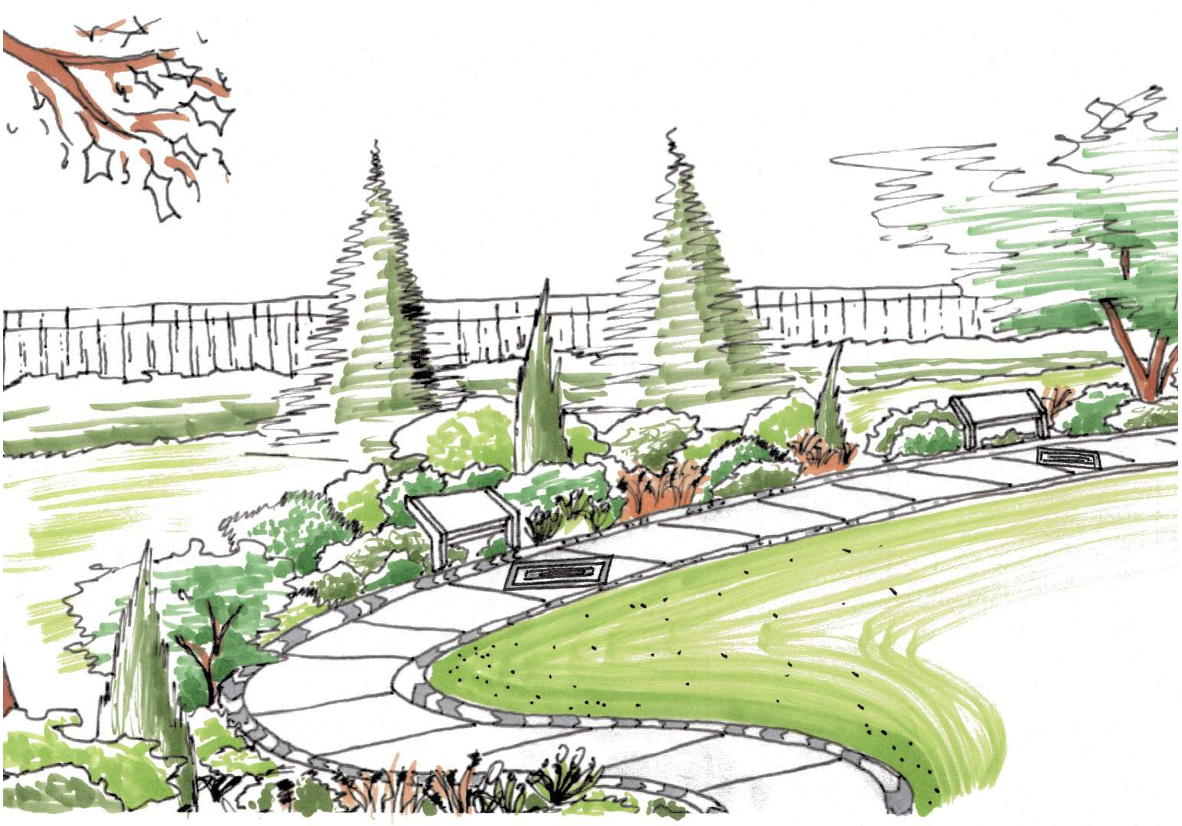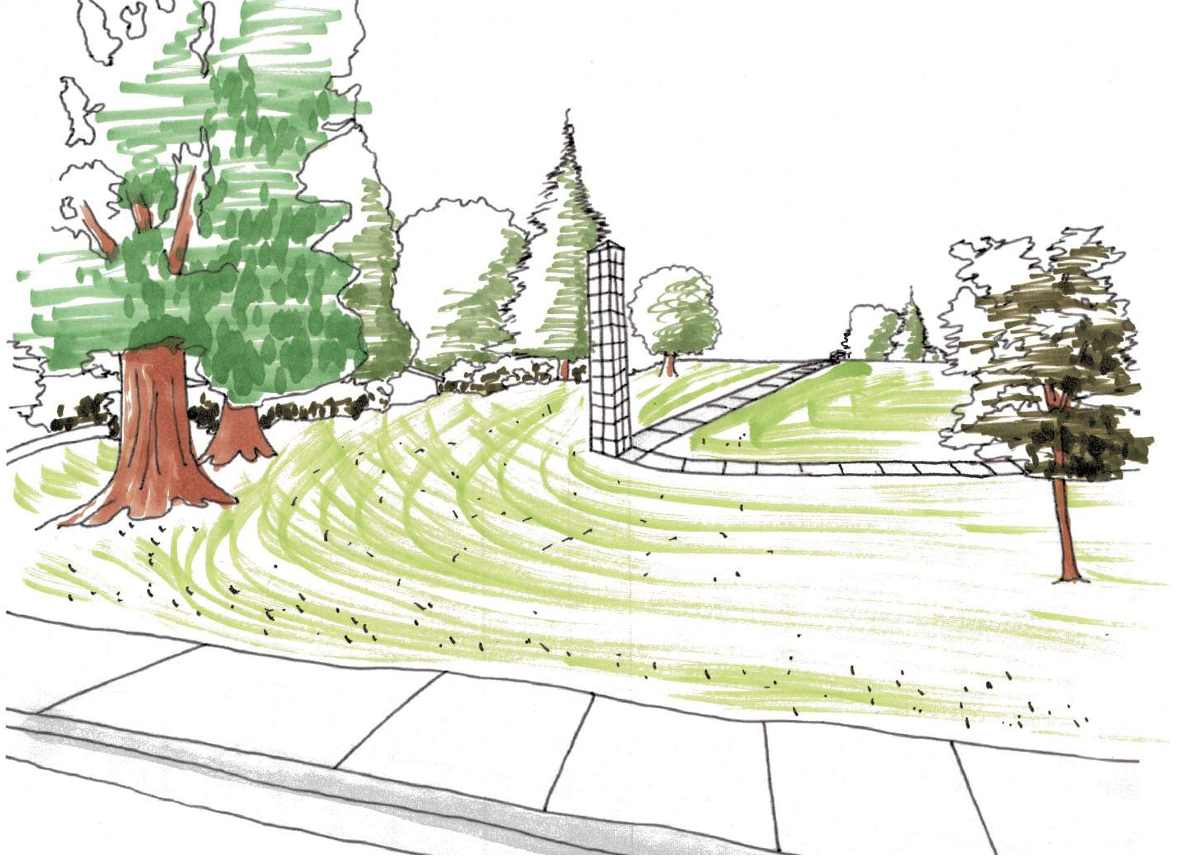EWEB started collecting feedback for the historic mitigation of the College Hill Reservoir System in the fall of 2023. We held a public meeting, met with stakeholders (tribal, agency, and institutional partners), and collected ideas through a community survey. In the months since, we analyzed the feedback and developed potential solutions, which are outlined below.
We are now seeking input on the options. This input will help the team understand what features resonate with the community and what adjustments may be necessary. We will use comments to develop the final historic mitigation plan and share it with the community.
Feedback Analysis
There were two distinct themes in the feedback we collected. Members of the public expressed a desire to establish a physical representation of reservoir 607. To honor this feedback, we explored the ideas of:
- Saving a portion of the reservoir
- Creating an exterior interpretive exhibit
- Installing height posts and a border to demarcate original reservoir
- Developing a mural depiction of the site
The stakeholder group focused on memorializing the significance of the facility in advancing Eugene's water system. We explored the following options to address this input:
- Creating a digital exhibit
- Digitizing records for public access
Each of these ideas is further explored below. For all options, EWEB will strive to prioritize accessibility by adhering to the Americans with Disabilities Act, and interpretive standards set forth through the National Park Service, the Smithsonian Institution, and principles of universal design.
NOTE: The conceptual drawings are meant to illustrate potential settings for the historic mitigation options. Final decisions on the site layout and design will be made under a separate landscaping process.

Saving a portion of the reservoir
We asked Petersen Structural Engineers (PSE) to explore three options:
- Option 1: Save a portion of the wall in-situ (in place)
- Option 2: Relocate a portion of the wall to a different area of the site
- Option 3: Relocate the railing piles from the top of the reservoir
Option 3 is the only feasible way to save a portion of the reservoir.

Creating an exterior interpretive exhibit
This option would memorialize the reservoir’s importance for water storage and community recreation in the form of informational signage and reservoir artifacts. The exhibit could be a standalone installation near the tanks or placed along a walking path.

Installing height posts and a border
This option would involve installing permanent height markers where the four corners of reservoir 607 stood and demarcating the former border of the reservoir with a concrete inlay or similar. This option is not recommended because of space constraints.

Developing a mural depiction of the reservoir
Finally, we explored working with a local artist to create a mural of reservoir 607. Informational signage could be placed nearby to provide information and background about the reservoir's history and significance. The mural would not be located on the College Hill site, but located elsewhere through the city's Community Mural Program.
Web-based solutions
Create a digital exhibit
This digital exhibit could complement the exterior physical exhibit on the College Hill site. Themes could include:
- People’s use of water overtime, including capturing Indigenous history (of water use at its source) to the evolution of water conveyance and storage systems.
- Feature Indigenous belongings related to discussion of ancient land management techniques, such as water vessels and harvesting tools.
- Feature historic photographs and digitized historic drawings of the College Hill Reservoir and other aspects of Eugene’s historic-period drinking water systems.
- Feature historic-period articles on public health and drinking water (i.e., cholera outbreaks), and the importance of the evolution from unregulated private water systems to regulated public systems.
- How water influenced the evolution of the College Hill/Friendly Area Neighborhood
- Feature historic-period engineering drawings illustrating why the location of College Hill was important for water storage and how elevation influences potable water access for the surrounding communities (i.e., gravity systems).
- Feature historic-period and current demographic information pertaining to how the introduction of potable water storage resulted in the development of the College Hill/Friendly Area neighborhoods.
The digital exhibit option is not recommended because of cost constraints.
Digitize Records Related to the College Hill Reservoir System
This option would preserve and make records related to the College Hill Reservoir System widely available to the public.
- Appropriate repositories could include Northwest Digital Heritage, the Oregon Historical Society, the University of Oregon Special Collections, and/or the Lane County Historical Society

